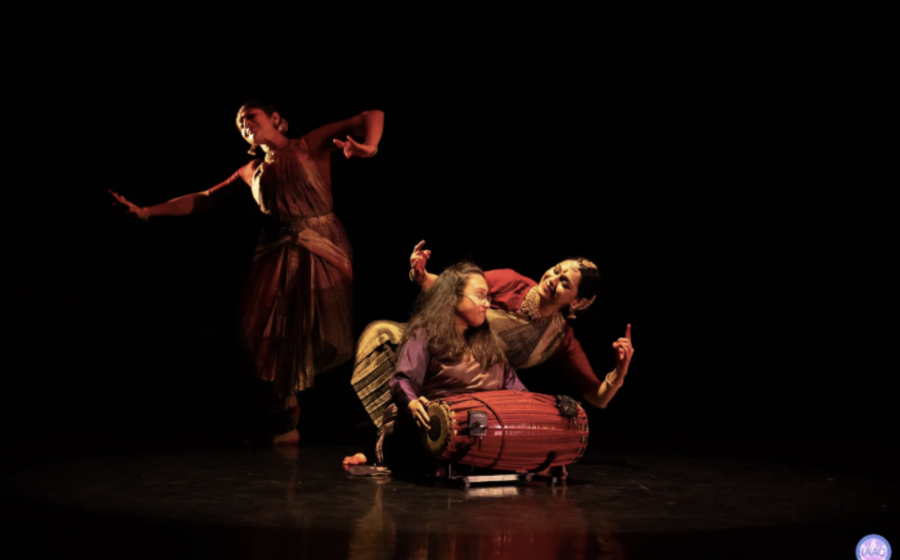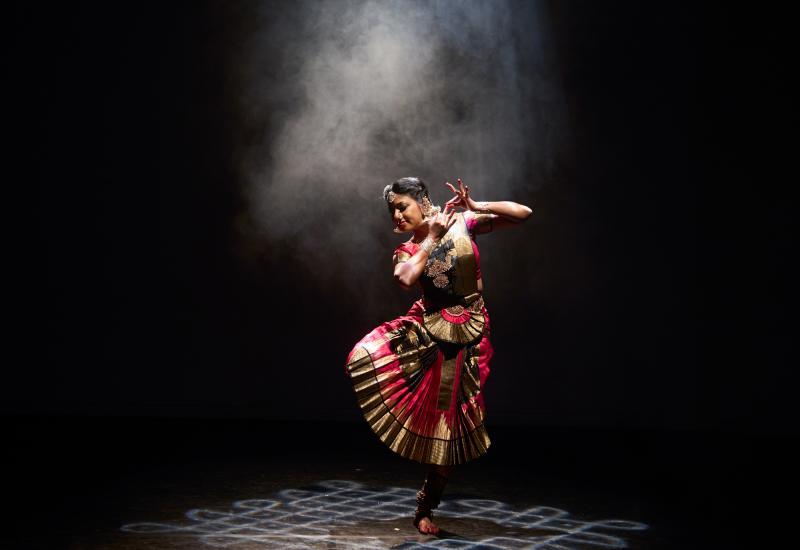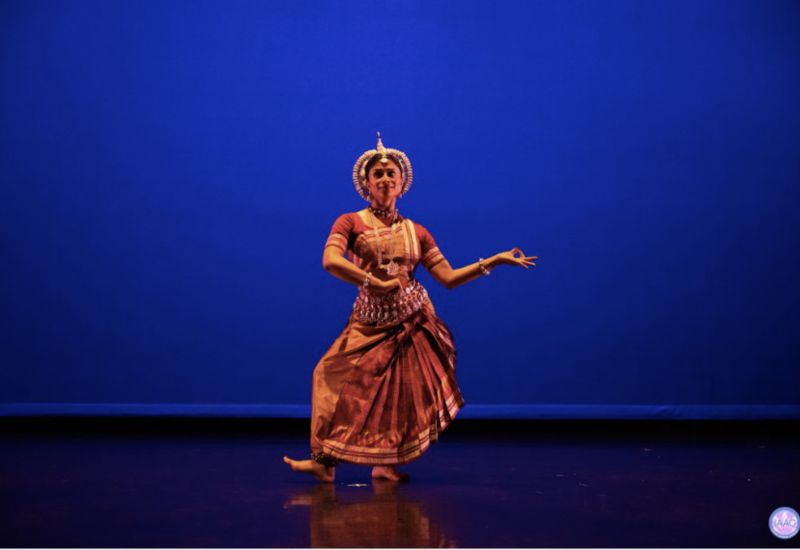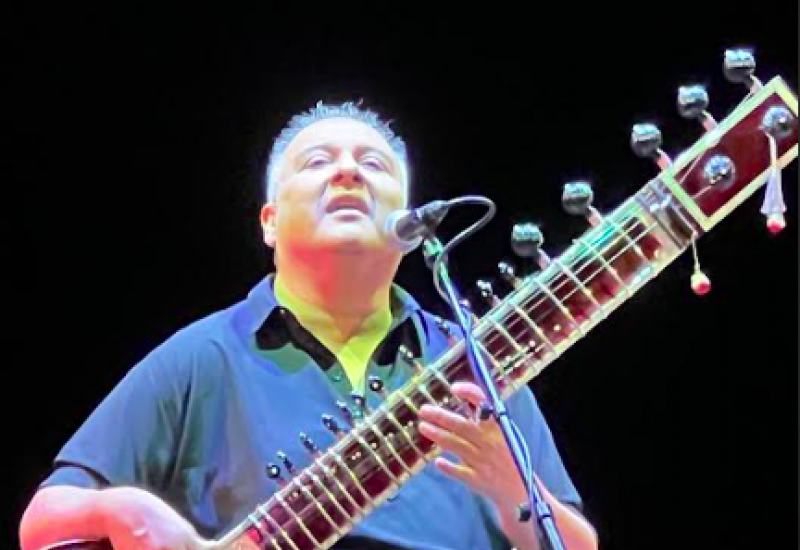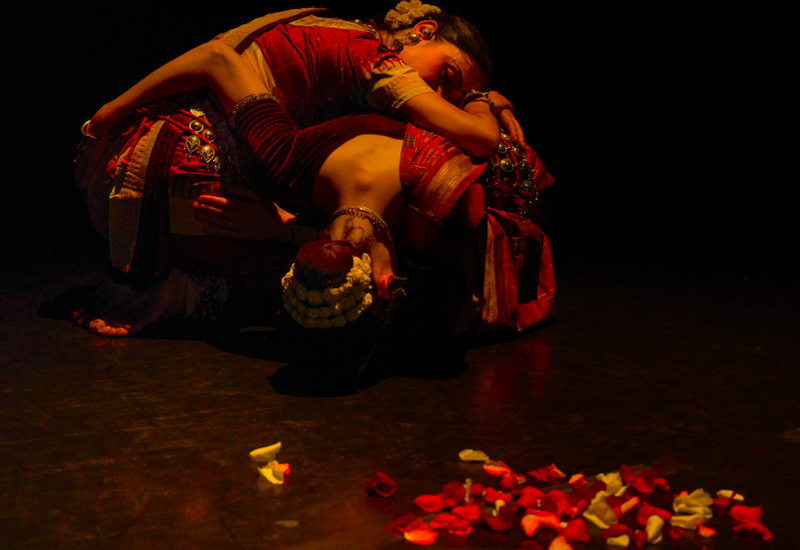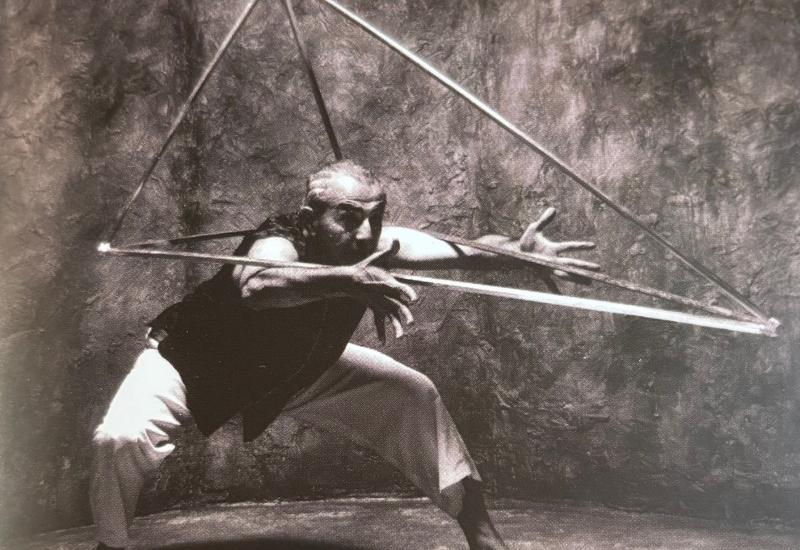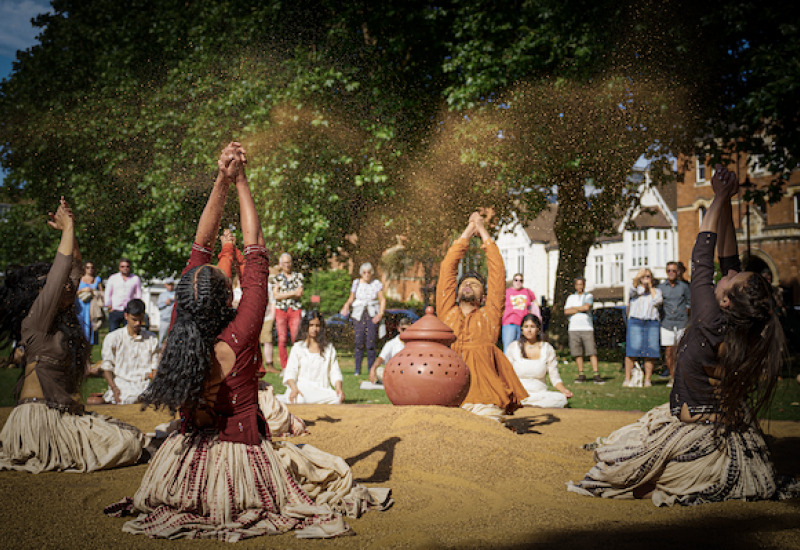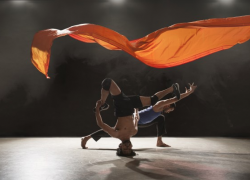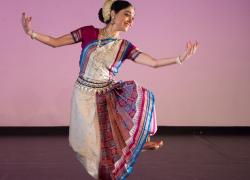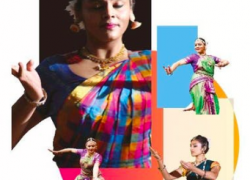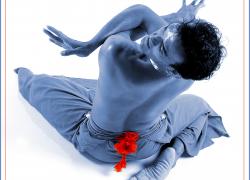Line & Verse Review: Erasing Borders Dance Festival 2025, Day Two
Photos: Nir Arieli/Erasing Borders Dance Festival
Day two of the Erasing Borders Dance Festival, presented by the Indo-American Arts Council, offered a rich interplay of classical rigor and contemporary storytelling.
The evening opened with a student group from the Odissi Dance Company, under the direction of Dr. Aparupa Chatterjee. A vibrant ensemble of six young odissi performers danced to O.S. Arun’s soulful rendition of Jayadeva’s Ashtapadi Chandana Charchita in ragam Brindavani, evoking gopikas in the gardens of Vrindavan expressing their devotion and divine love for Krishna. The dancers radiated joy and rhythmic confidence, bringing youthful vitality to the stage. Their energy was infectious, and their promise undeniable. Greater attention to detail, such as synchronizing where their gaze rested, would have further enhanced their presentation.
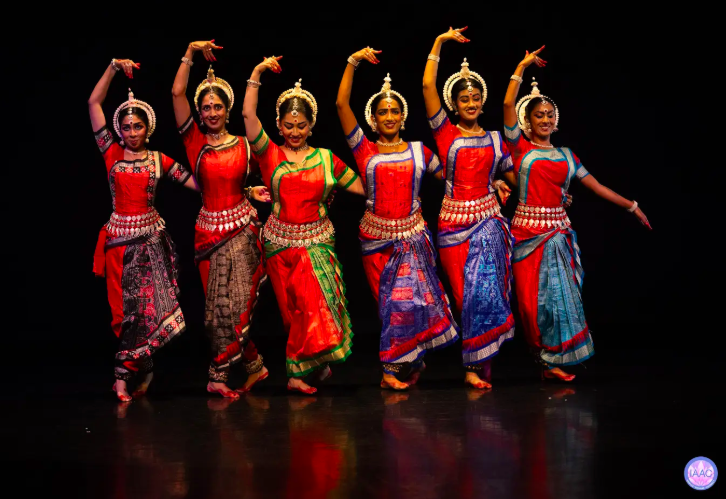
As the piece concluded, the dancers began playing the manjira (hand cymbals). The sound, however, was inaudible against the recorded track, and visually, the effect added little. The instruments were stepped on during the final sequences, which felt culturally inappropriate and distracted from an otherwise uplifting and well choreographed presentation.
Next came Pranamya Suri with a kuchipudi solo to Omkara Karini in ragam Lavangi, praising the divine mother as the embodiment of Om and vanquisher of demons. Beginning with a shloka at center stage and progressing into a confident jati, she displayed elegance and composure. A lengthy sanchari narrated a demon’s attack on the radiant goddess, who quelled his advances with ease. Suri’s use of widened eyes was particularly effective, clearly showing the goddess’s majesty and power through controlled abhinaya that matched the narrative.
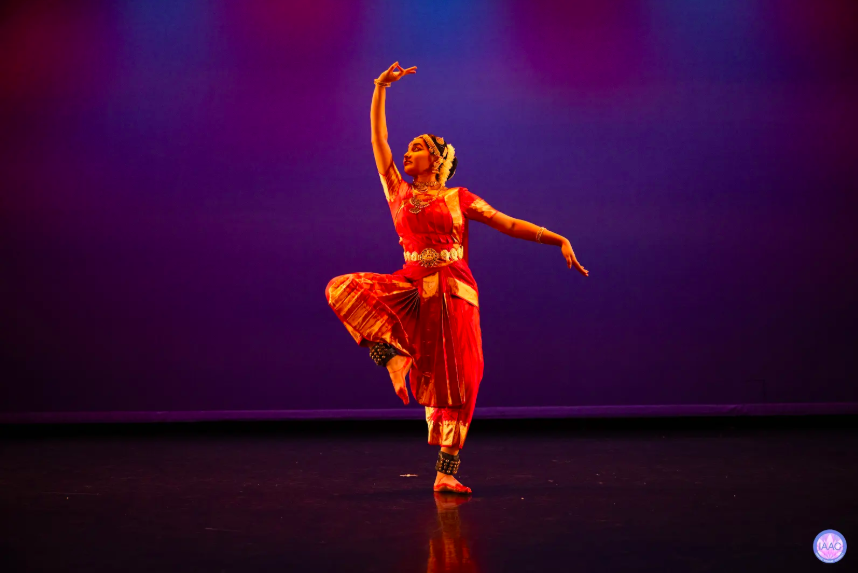
Greater focus on precision of footwork would have elevated the work. At times, Suri slipped into a pedestrian stance, standing with feet apart in sama pada, taking away from kuchipudi’s stylized beauty. Balances on one leg occasionally wavered. She employed kuchipudi’s distinctive device of mouthing lyrics, a hark back to its theatrical roots, though its sporadic use sometimes distracted from abhinaya rather than enhancing it. Her performance reflected true devotion to the form, with the potential for greater expressive depth through continued refinement of technique.
The festival then shifted into contemporary territory with New York City–based Rovaco Dance Company, founded by Rohan Bhargava, presenting Madaari, the Monkey Master. Inspired by Indian street performers who control monkeys, the piece reframed this imagery as a metaphor for human desire to possess and control in relationships. Four dancers in simple kurtas blended contemporary vocabulary with contact and partner work, expanding the festival’s visual landscape and offering a refreshing counterpoint to the classical forms.
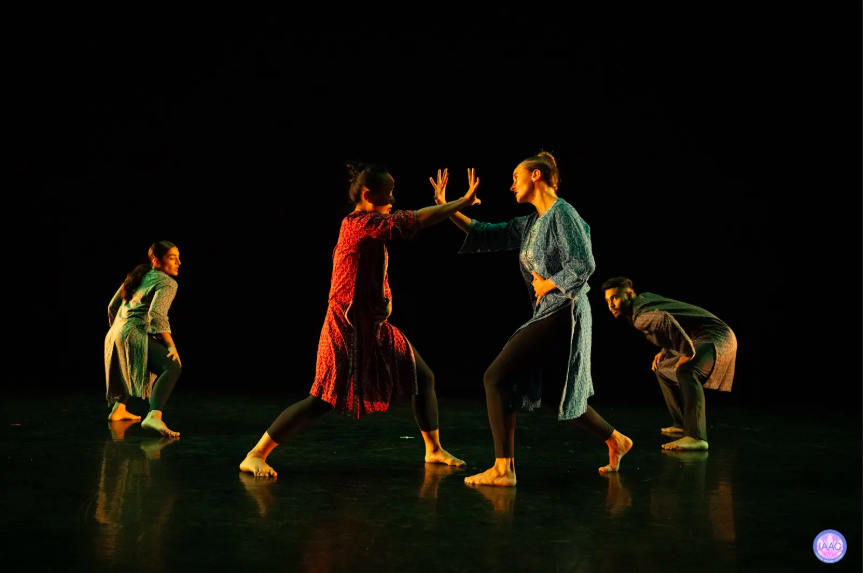
Set to a bass-driven soundtrack, recurring motifs of hugging, kissing, biting, and restraining gave the choreography a raw immediacy. Lifts and leaps appeared effortless, and moments of unison carried striking impact. The conclusion, one dancer draped upside down over another’s back after a cycle of torment, lingered with haunting stillness.
Returning to classical form, Ravija Desai presented a kathak solo to the ghazal Naina Re Naina, choreographed and sung by her mentor Smt. Vaishali Trivedi. The piece evoked the heroine’s despair as she waits in vain for her beloved. Desai’s movements flowed with grace, her footwork neat and precise. A highlight was her sanchari, in which she readied herself and her home, embodying longing through understated elegance. In a city where kathak is often presented through dizzying spins and flashy footwork, Desai’s minimalist restraint allowed poetry and emotion to breathe.
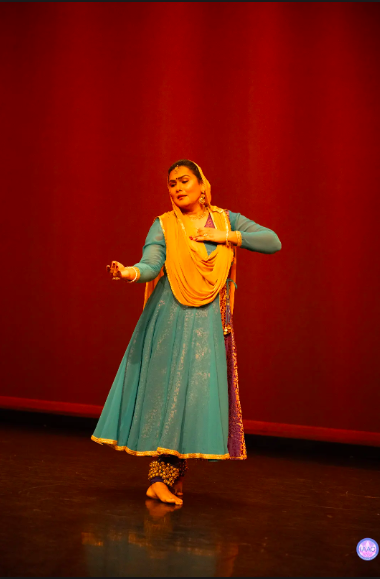
The evening closed with the marquee presentation: Shaktya, performed by the inimitable trio of Rama Vaidyanathan and daughters Dakshina Vaidyanathan Baghel and Sannidhi Vaidyanathan. A collection of bharatanatyam works on female figures across mythology, history, and contemporary life, Shaktya revealed the trio’s intergenerational synergy and fearless storytelling.
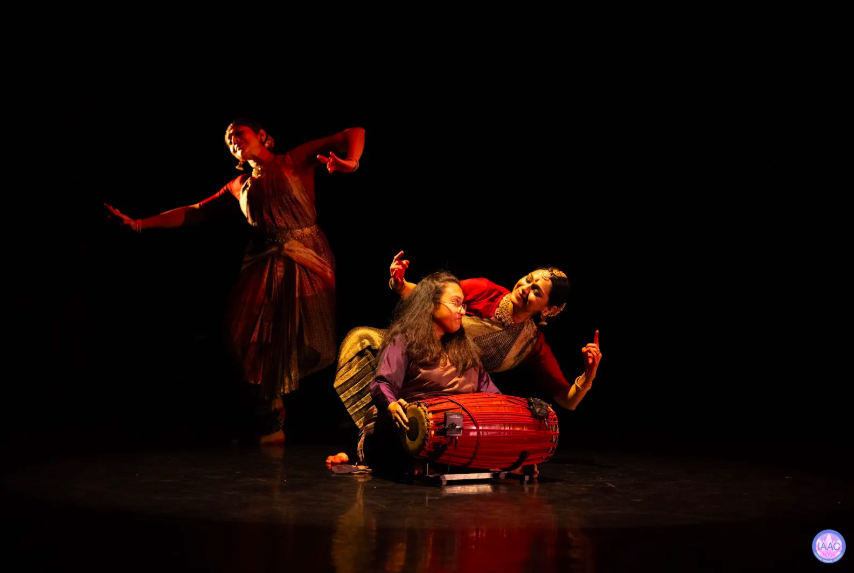
The opening piece explored ten-armed Durga. Rama and Dakshina moved with taut precision, while Sannidhi’s mridangam playing acted as rhythmic partner. Jathis, spoken and danced, created a vibrant jugalbandi that compensated for the absence of a full orchestra. Durga rose like a shoot from seed, her many arms symbolizing the numerous responsibilities women carry. The sound balance was uneven such that the percussion overpowered the dancers’ footwork and the spoken jathis, blurring their intended clarity.
The second piece, performed by Dakshina Vaidyanathan, portrayed Mai Pagho, the 18th-century Sikh heroine who opposed Mughal emporer Aurangzeb and defended her sacred faith. Mai Pagho, persuaded deserters, headed by Maha Singh, to reclaim their faith and led them into battle. The men, known thereafter as the Chali Mukte, the forty liberated ones, became immortalized in Sikh history, though the courageous woman who led them has been all but erased from the record.
Dakshina’s performance was magnetic, her presence asserting itself with such force that she conjured the impression of entire battalions through sheer energy. Minimalist but precise gestures created vivid images of the looming walls of the fort. Her eye contact, unwavering and searing, amplified the emotional stakes. Particularly striking was her use of metaphor: Dakshina, as Mai Pagho, likens Maha Singh’s cowardice to a bird taking flight at the sight of a snake, becoming both his conscience and his commander. And truly memorable was when she showered the soldiers with her own bracelets, symbolizing the kara, one of the 5 Sikh articles of faith, imploring them to reclaim their dignity and faith. The integration of Punjabi verses and English narration made the story accessible while retaining gravitas, and intricate konnakol vocalizations during the battle scenes heightened its visceral urgency. The piece concluded with a love letter to Mai Pagho, Dakshina’s body softening into prayerful devotion. It was a reclamation of a woman’s voice too often silenced in history, and on stage her legacy was made unforgettable.
Rama Vaidyanathan followed by depicting Janabai, the 13th-century Varkari saint-poet. Defying convention in a misogynistic society, she removed her head covering while neighbors whispered disapproval. “Let it be,” she seemed to declare, “let them see my face.” A memorable sanchari imagined Janabai as a courtesan with Keshava as her customer, combining dreamlike sequences with bold, grounded reality. Luminous stage presence, combined with sensitive lighting, created an intimate space that took viewers on a fully immersive emotional journey, blending vulnerability, defiance, and spiritual devotion with complete abandonment to the divine.
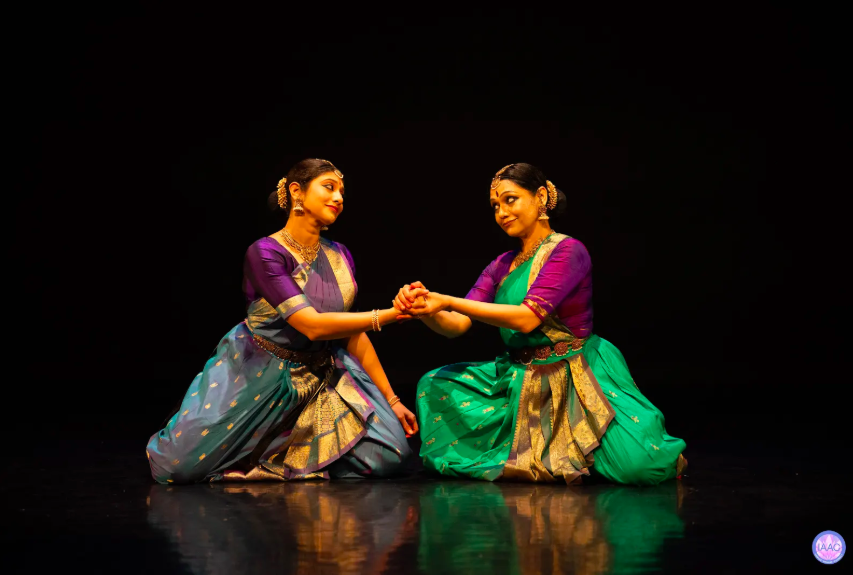
The finale featured Rama and Dakshina in a true story of two ordinary women (Phoola, a Hindu and Gulabo, a Muslim) set against the Partition of India and Pakistan. Subtle yet poignant gestures captured resentment transforming into empathy, division into solidarity. The mother-daughter duo beautifully conveyed friendship, sisterhood, resilience, and humanity amidst turmoil. Something we need more of in today’s political climate. The closing image of a stream, once border and now bond, distilled the festival’s very mission: erasing borders of geography, religion, and identity.
Shaktya was a testament to the power of dance to embody myth and devotion, reclaim overlooked histories, and reflect contemporary struggles. The Vaidyanathan trio continue to expertly showcase the evolving possibilities of bharatanatyam.
The pacing of the works felt compressed, with gaps between pieces kept very short, perhaps due to timing constraints. While this ensured momentum, it also left little room for the audience to pause and absorb the depth of each work before being carried into the next. The blend of languages used for the compositions, rooted in North Indian languages, reflected the Vaidyanathan trio’s strong base in Delhi and lent the performance a distinctive cohesion. At the same time, the inclusion of a South Indian language piece would have added yet another layer to the evening’s rich tapestry.
Day two of the Erasing Borders Dance Festival reaffirmed the festival’s role as one of New York’s most compelling platforms for Indian dance, a space where lineage and innovation converge in urgent dialogue. The strength of this year’s programming ensures that next year’s edition will be awaited with keen anticipation.
Editorial note: We are retaining US spelling conventions for Line & Verse

